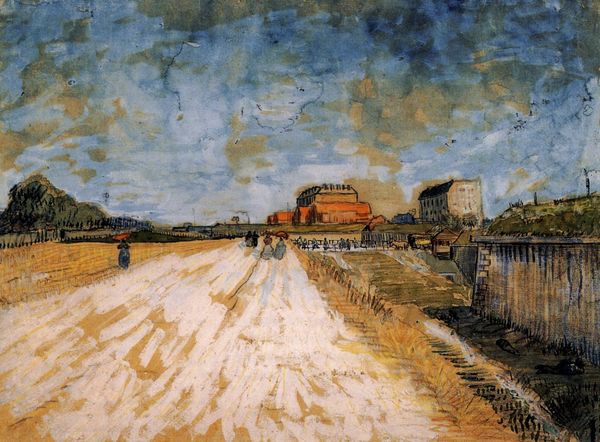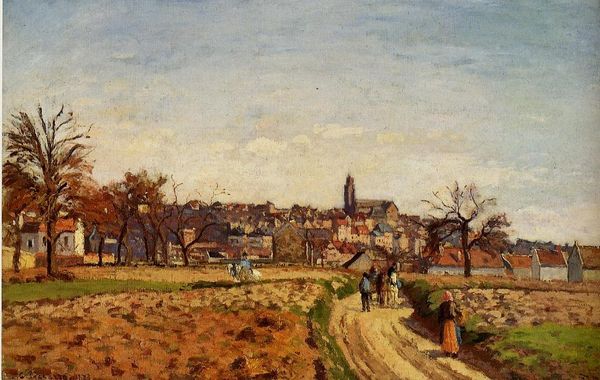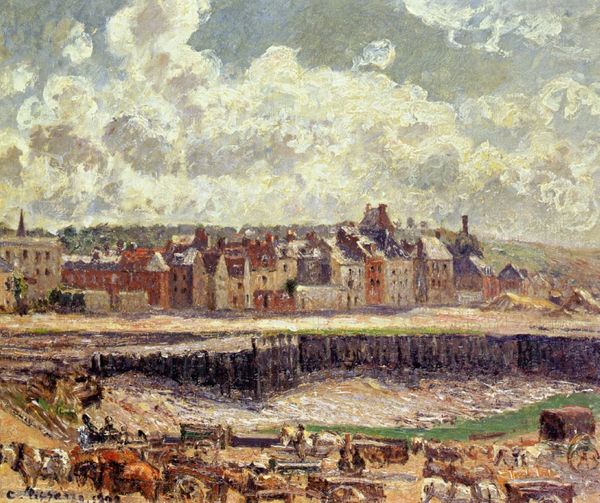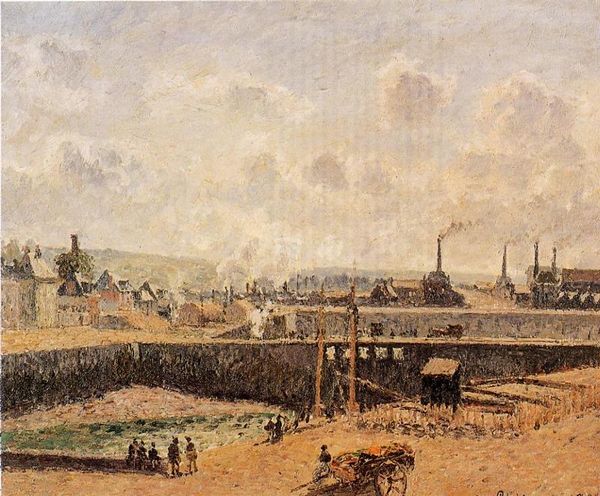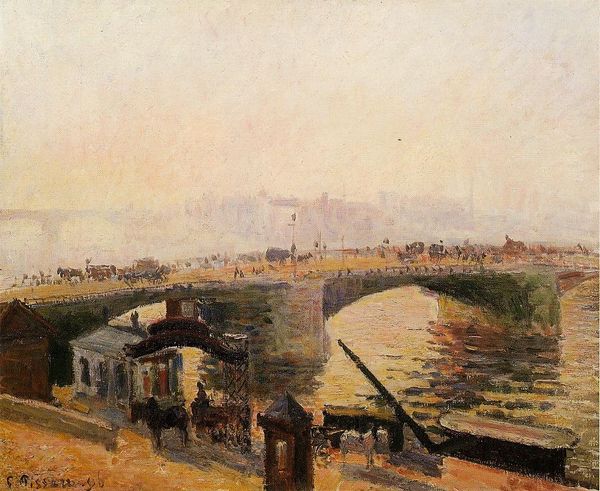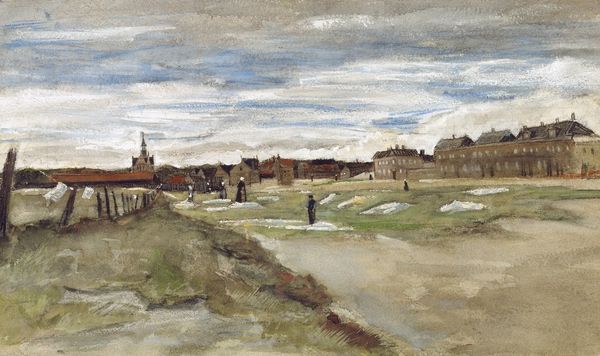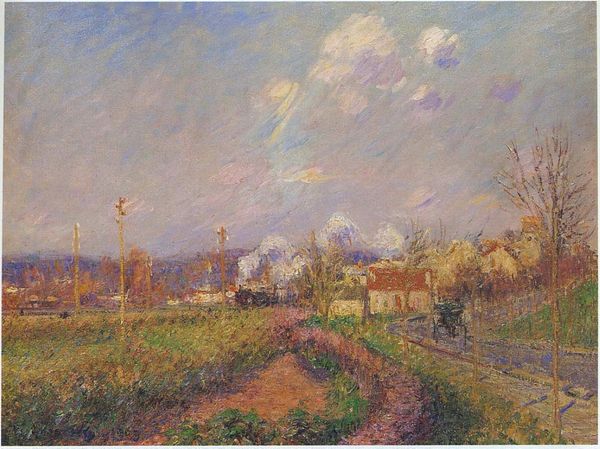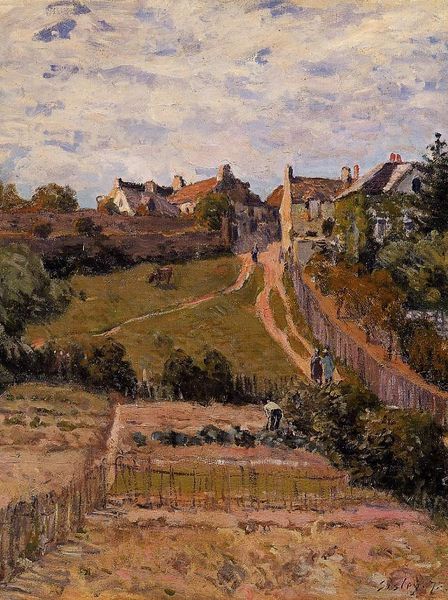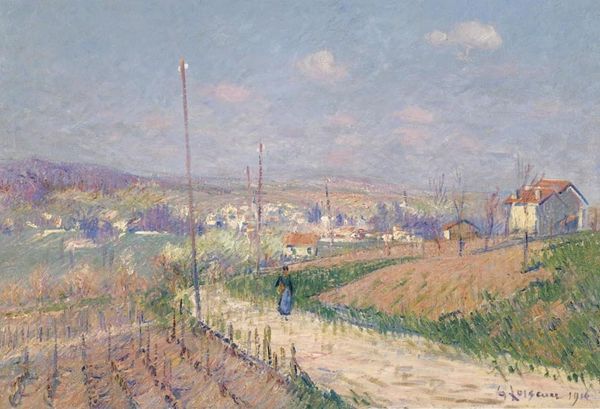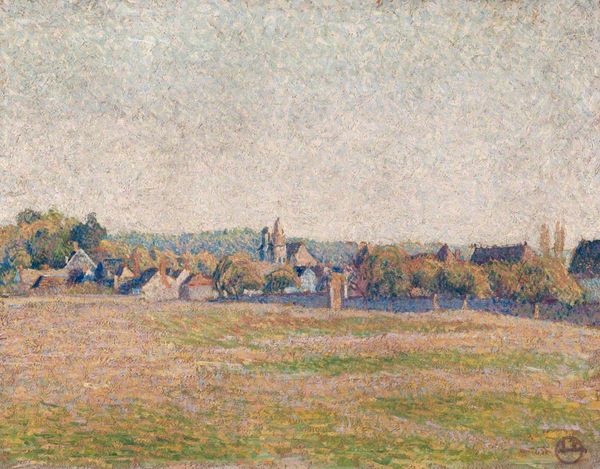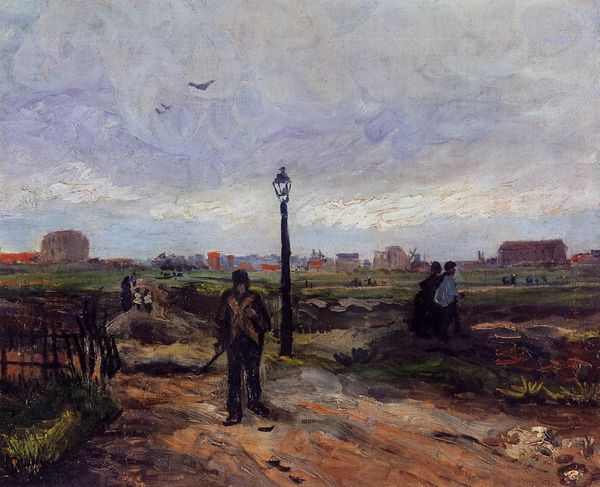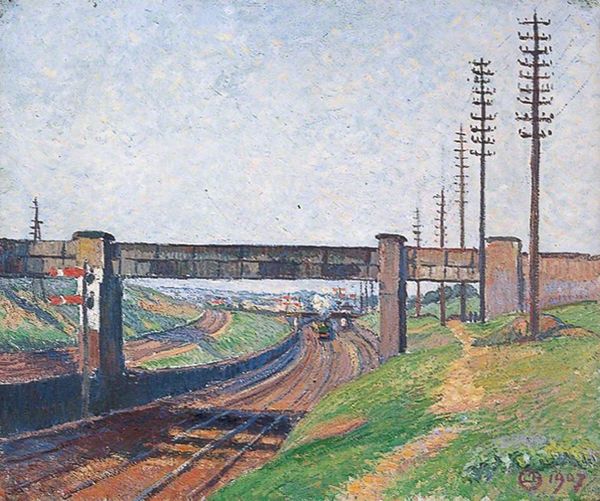
divisionism, painting, oil-paint
#
divisionism
#
painting
#
oil-paint
#
geometric
#
cityscape
#
futurism
Copyright: Public domain
Editor: Umberto Boccioni's "Factories At Porta Romana," painted in 1910 with oil paint, really strikes me as a work that captures a sense of transition and bustling activity. I’m drawn to the combination of these sort of delicate, almost impressionistic brushstrokes and the very modern subject matter. How do you interpret this work within the context of early 20th-century art and culture? Curator: It's interesting that you picked up on the feeling of transition. Futurism, the movement Boccioni belonged to, glorified industrialization and progress, seeing it as a dynamic force reshaping society. What role do you think public institutions, like museums, play in legitimizing and shaping that perception of modernization? Editor: I guess they can emphasize certain narratives, maybe focusing on the technological advancements while downplaying social costs or environmental impact. How does that tension play out in this particular painting? Curator: Boccioni doesn't shy away from showing us the chaotic energy of construction, the smoke, and the disruption of the natural landscape. However, it's also undeniably romanticized, isn't it? There’s almost a celebratory air to it. How do you think this positive depiction of factories ties into Italy’s broader political ambitions at the time? Editor: Italy was aiming to become a major player on the world stage, I believe. So perhaps embracing industrial power was seen as vital for national strength and modernity. Looking at it now, I wonder about the laborers and the everyday experience. I’m also noticing the divisionist brushstrokes more. It’s kind of contradictory for Futurism, right? Curator: Precisely! He used an older style to depict something completely new. This really highlights the Futurist’s radical but also quite complicated relationship with the past and tradition. Museums have struggled to interpret this kind of mixed message over time. What have you gleaned overall from your own deeper looking here? Editor: I hadn’t thought of the romanticized angle so overtly. It makes the visual rhetoric much clearer: celebrating an industrialized future as a progressive political stance. Curator: Agreed. Examining art through the lens of its socio-political context unveils deeper meaning!
Comments
No comments
Be the first to comment and join the conversation on the ultimate creative platform.
